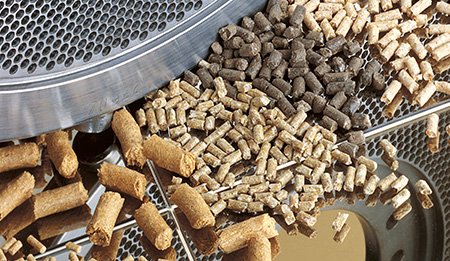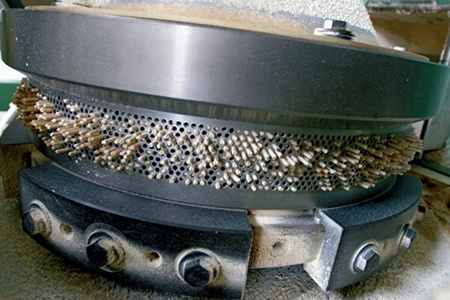Moisture Content in Pelleting

Moisture that is present in biomass simplifies gelatinization of starch, denaturation of proteins and solubilization of fibres in the process of pelleting. The Biomass treated by steam has the best qualities, as additional heat energy changes physicochemical qualities to such grade that bond between particles considerably increases. It leads to improvement of pelleting quality. S. Mani jointly with co-authors mark that moisture in biomass when pelleting functions as a binding agent and increases bonding with the help of powers of van der Waals, thereby increasing area of contact between particles. A. Demirbas discovered that increase of moisture content in sawdust of fir is from 7 up to 15 per cent to considerably increases durability of pellets. O. D. Muller detected that in diapason change of moisture from 8, 5 up to 15 per cent wood pellets produced from asp possess high mechanical durability. Many researches came to the conclusion that optimal content of moisture for biomass pelleting differs for each separate raw materials and conditions of treatment.
Thus, optimal content of moisture for compaction of beech was from 6 up to 10 per cent, for fir - about 10 per cent, pine – from 6 up to 8 per cent, asp - 10-12 per cent olive cellulose 5 per cent. Many scientists emphasize that increase of feedstock moisture higher than optimal can have negative influence on mechanical qualities and density of pellets. Besides of quality of tightened raw materials the very process of pelleting depends on content of moisture. D. Andreiko and J. Grochowicz discovered that the expenditures of energy on pressing decrease with increase of moisture content from 9, 5 per cent up to 15 per cent. P. Rousset showed with co-authors that moisture content increase in pine and beech feedstock decreases needs in energy for pelleting.
Size of particles, form and disposition influence pelleting process

Before pelleting biomass is crumbled up to certain size of particles. J. D. Payne asserts that certain percent of small particles is necessary for increase of pelleting efficiency and lowering of expenditures. J.B.
Dobie proved that fine crumbling up of raw materials allows to get pellets with higher density, increases efficiency of granulator, as the material passes the matrix easier.
There is a critical size of particles lower of which pelleting is not reasonable in view of the fact that too small particles can wedge granulator. P.D. Jensen, M. Temmerman and S. Westborg revealed in their research of the influence of size of particles on the quality of pellets that high content of particles less than 0,5 mm in diameter renders negative influence on friction and leads to lowering the quality of pellets. They mark that the content of small particles must not exceed 10 up to 20 per cent, if not adding a binding agent. O. D. Muller marks that pellets obtained while crumbling up of raw materials by hammer mill with the usage of sieve with diameter of holes 0,8 mm are of reduced qualitative characteristics.
